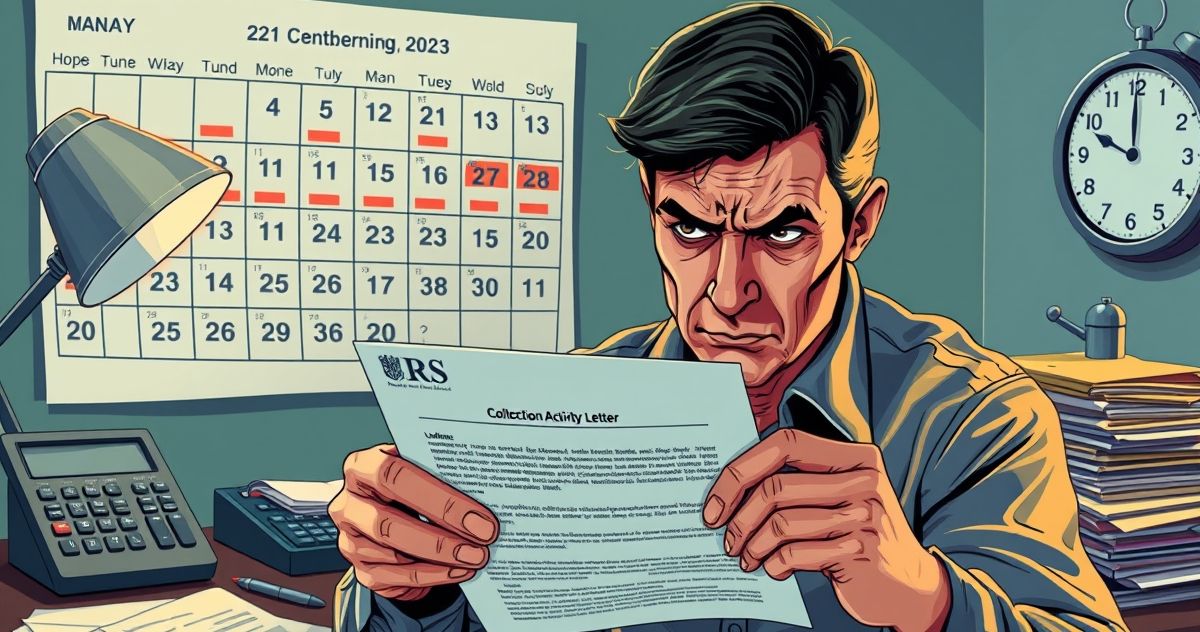Understanding the IRS Collection Activity Letter
An IRS Collection Activity Letter is a crucial communication tool used by the Internal Revenue Service (IRS) to inform taxpayers about overdue taxes and the impending collection actions. Its primary purpose is to alert the taxpayer of their current tax liabilities and to detail the steps the IRS may take if the debts are not addressed promptly. By understanding the key features of these letters, taxpayers can better manage their tax debt and avoid severe financial consequences.
Primary Purpose
The main objective of an IRS Collection Activity Letter is to initiate communication with taxpayers regarding outstanding tax debts. The letter is designed to provide transparency and clarity about what taxpayers owe and the consequences of non-payment. In the initial stages, these letters often serve as a gentle reminder, but as the debt remains unresolved, they escalate to more urgent notices outlining possible enforcement actions.
Key Features
- Identification of Tax Debt: The letter clearly specifies the amount of taxes owed, including any interest and penalties accrued over time. This helps taxpayers understand the full scope of their financial obligations.
- Explanation of Rights: Taxpayers’ rights are outlined, ensuring they are aware of their options for responding to the IRS. This includes information on how to appeal or dispute the owed amount if they believe it is incorrect.
- Detailed Timeline: The letter provides deadlines for payment or for responding to the IRS. Understanding these timelines is critical, as missing them can lead to increased penalties or enforcement actions.
- Payment Instructions: The document offers detailed instructions on how to pay the owed amount, ensuring taxpayers know their payment options and how to proceed to resolve the issue.
Filing or Compliance Requirements
Receiving an IRS Collection Activity Letter implies that there are compliance requirements that the taxpayer has not met, such as paying overdue taxes or filing past due returns. The letter may specify the need for immediate action—such as filing an overdue return or arranging payment plans—and may include timely instructions for compliance. Failure to address these requirements can lead to more severe consequences.
Penalties and Consequences for Non-Compliance
If the taxpayer does not comply with the IRS Collection Activity Letter, they may face several penalties and consequences, such as:
- Additional Penalties and Interest: The longer the debt remains unpaid, the more penalties and interest the taxpayer will accrue. This increases the overall debt burden and can make it more challenging to achieve compliance.
- Enforcement Actions: If debts remain unpaid, the IRS may initiate enforcement actions, including levies on bank accounts, wage garnishments, or liens against property. These actions can severely impact a taxpayer’s financial health and credit standing.
- Potential Legal Action: In extreme cases, unresolved tax debts can lead to legal proceedings, further complicating the taxpayer’s financial situation.
Importance in Tax Resolution
The IRS Collection Activity Letter is vital for both the IRS and the taxpayer. For the IRS, it initiates the debt collection process—a necessary step to ensure compliance and maintain the integrity of the tax system. For taxpayers, receiving this letter is a significant alert about unresolved tax issues that can help them take necessary action to avoid further complications.
Understanding and responding appropriately to these letters is essential for managing tax debt effectively. For many taxpayers, engaging with these letters early can lead to manageable solutions, such as:
- Negotiating Payment Plans: Taxpayers can work with the IRS to set up installment agreements, allowing them to pay off their debt over time rather than in a lump sum.
- Exploring Offers in Compromise: In situations where the taxpayer is unable to pay the full amount, the IRS may agree to a reduced settlement.
- Requesting Penalty Abatement: If justified, taxpayers can request the IRS to remove certain penalties, thereby reducing the overall debt.
In sum, the IRS Collection Activity Letter serves as both a warning and an opportunity for taxpayers to address and manage their tax obligations proactively. By maintaining open communication with the IRS and understanding the implications of these letters, individuals can strategically resolve their tax debts, ultimately securing a more stable financial future.


 Chinese (Simplified)
Chinese (Simplified) English
English Spanish
Spanish